The Importance of Being a Tiger— Tiger Motifs in Korean Art Posted by Linda on Dec 23, 2011 in Culture, Grammar, Korean Language, Vocabulary
A tiger 호랑이, or the transliteration “ho-rang-i”, is a significant motif in Korean culture, especially in the realm of folklore and folk paintings. 호랑이들 represent courage and pride; they are also a good luck symbol.
Korean folk paintings, known collectively as 민화, or the transliteration, “minhwa” were the common people’s art formin the late Joseon Dynasty (17th – 19th centuries), a pinnacle period of quality and quantity of painting in Korean history. During this era, artists illustrated their love for their people and country with an emphasis on realism. The most popular 민화 portray animals, particularly 호랑이들. 호랑이들 were depicted as “silent, but expressive”, alluding to a feared and revered beast.
민화, along with its 호랑이 motifs, remain important aspects of Korean identity and culture—influencing Korea’s contemporary art.
Last week I went to the opening reception of “Tiger-Silence”, an exhibit at the Embassy of the Republic of Korea’s Cultural Center in Washington, D.C. I took a seat in the back of the room, making fast friends with another Korean-American girl who said she was, “obsessed with tigers.” I asked her, “Would you be able to translate for me, if I become confused during the presentation?” She said, “I am Korean-American, but I do not speak fluent Korean. I will try my best.”
During the opening reception, the embassy’s spokesperson narrated a film that showcased various 민화 호랑이 paintings. All of the paintings portrayed realistic, but stylized 호랑이들; some 호랑이들 were illustrated with hats and people-like personas. Apparently, this genre is uniquely Korean. This historical montage was an introduction to the exhibit’s focal point, Im Taek Jun’s contemporary art— his 호랑이들.
“Check out the artist, Im Taek Jun.”, I said quietly. Im Taek Jun (임택준) is an inviting man with a quiet and playful confidence, i.e., tiger-like. Mr. Im has been a Korean contemporary artist since the late 1980s. He dresses as if he were a Joseon dynasty commoner in traditional baggy pants called 바지, or the transliteration “paji”. He also wears his hair in a topknot called a 상투, or the transliteration “sangtu”; married men during the Joseon Dynasty would wear 상투두개. His contradictions are endearing; his traditional garb and modern art.
Mr. Im then took center stage and discussed his journey in creating his 21st solo exhibit, “Tiger-Silence”. He does not speak English. A translator reiterated his words to a mostly Anglo-American audience. He said, “I am always expressing creativity in different ways; I am a performer and a painter. I brought my 호랑이 paintings from Korea to share with the world. I would like you to see the playful side of the 호랑이.” While smiling, he also said, “I played, smiled, and cried with these 호랑이들 [I painted]. Be a part of the art work, as I am.” His whimsical, child-like smile did not need translation.
After the opening introductions, everyone was invited to eat dinner that was catered by a local Korean restaurant. My new friend and I gobbled up elaborate plates of Korean food 한식, or the transliteration “hansik”!
With full stomachs, we then walked upstairs to the exhibit. I weaved through the crowd, and observed each 호랑이 painting.
Mr. Im’s 호랑이들 are modern, colorful, and yes— playful. He reinterpreted Korea’s 호랑이들 with a modern twist of “humorous satire”. I reminded myself of the traditional Korean 민화호, the 호랑이들. I mentally juxtaposed traditional and contemporary호랑이들: the Joseon Dynasty’s feared and revered 호랑이들; and Mr. Im’s friendly and colorful 호랑이들.
Here are some of my favorite pieces of the exhibit:
I wanted to ask Im Taek Jun many questions. I approached him with a formal bow. I forgot to bring my Korean language diary with collected words and phrases; I usually carry it with me as a security blanket. I froze. I said, “Welcome to the U.S. I admire your work.” He gave me a blank, but friendly stare. I flagged down the translator in a very ungraceful manner; “Um, pardon. I am having a difficult time trying to ask Mr. Im questions regarding the symbolism of his paintings.” The translator said, “Oh, I am sorry. I thought you spoke Korean.” She kindly translated our conversation, which ended with smiles and a few formal bows.
After mingling, my new friend and I decided to invite Im Taek Jun and his son on a tour of Washington, D.C. We casually asked his son, Chae Ho, who said, “Thank you for the kind invitation. Facebook me, and we can figure something out.”
A few days later, we all met up at in the L’ Enfant area and went to the few museums. At the Natural Museum of History, we saw a taxidermal 호랑이 suspended from the ceiling; in unison, we all said “ho-rang-i”.
After perusing the museums, we went on a short hike to find hamburgers. Out from the cold, we sat, ate, and conversed. My stunted Korean was enabled by my friend’s intermediate Korean. She was my bridge. I asked, “Mr. Im, what does ‘Tiger-Silence’ symbolize?” He said that in our modern world, many people talk without meaning. He wanted to make a statement with a “silent tiger” exhibit, explaining that a silent 호랑이 has a quiet confidence.
Ironically, I thought of how it has been decades since anyone has seen a real 호랑이 in Korea. In a way, 호랑이들 were silenced in Korea with extinction. But through art, the tiger speaks silently.
After our very American outing, we exchanged very American hugs. Mr. Im invited us to his studio in Korea. I felt very Korean.
If you would like to see Im Taek Jun’s 호랑이들, his exhibit “Tiger-Silence” will be displayed at the Korean Embassy’s Cultural Center in Washington, D.C. until January 7, 2012. If you go, I would love to know what you think!
If you are not able to visit Washington, D.C., you can visit Mr. Im’s blog (where all of his artwork is listed): http://blog.daum.net/upcloud2 .
Questions for you:
What do you think tigers symbolically represent?
And, what do you think of Korean traditional art vs. Korean contemporary art?
Below are key words, a useful sentence, and a helpful grammatical tip:
Key words:
Tiger— 호랑이; ho-rang-i
Tigers— 호랑이들; ho-rang-i deul
Art (as a whole)— 예술; yesul
Art (specific artwork)— 미술; misul
Traditional— 전통; jeontong
Modern/Contemporary— 현대; hyeondae
Art painting— 미술그림; misul geulim
Korean folk art— 민화; minhwa
A useful sentence/phrase (Fill in the blank with a noun.):
“I like _______________.”—
“나는_______________ 좋아하다”; “Naneun _______________ joh-ahada.”
A helpful grammar tip:
When speaking in plural form, there are two possible word attachments:
들; deul (added at the end of a word; used for people and animals)
두개; dugae (added at the end of a word; used for objects)

Build vocabulary, practice pronunciation, and more with Transparent Language Online. Available anytime, anywhere, on any device.




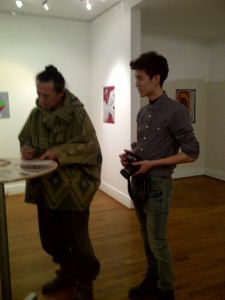
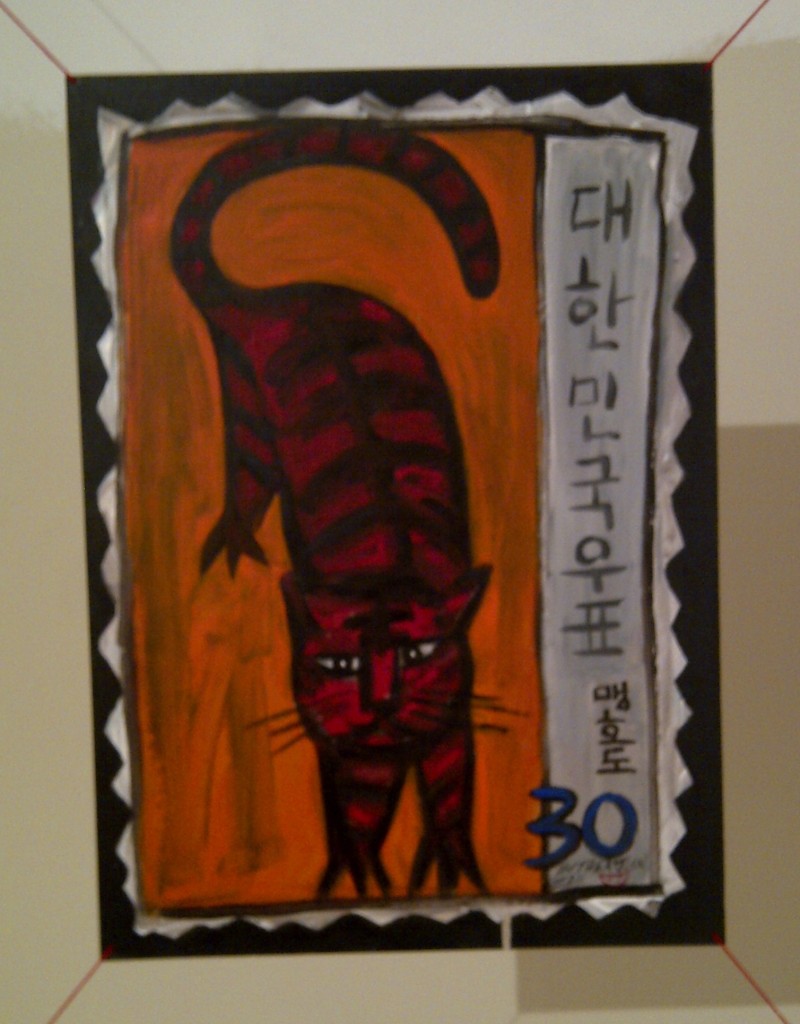
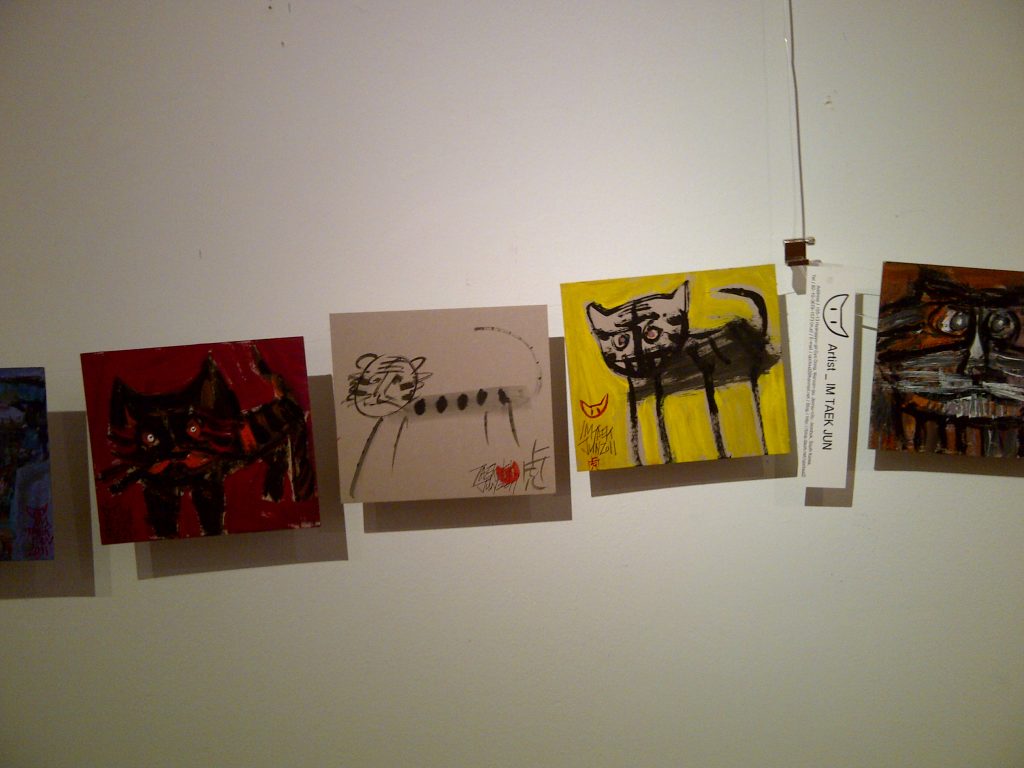
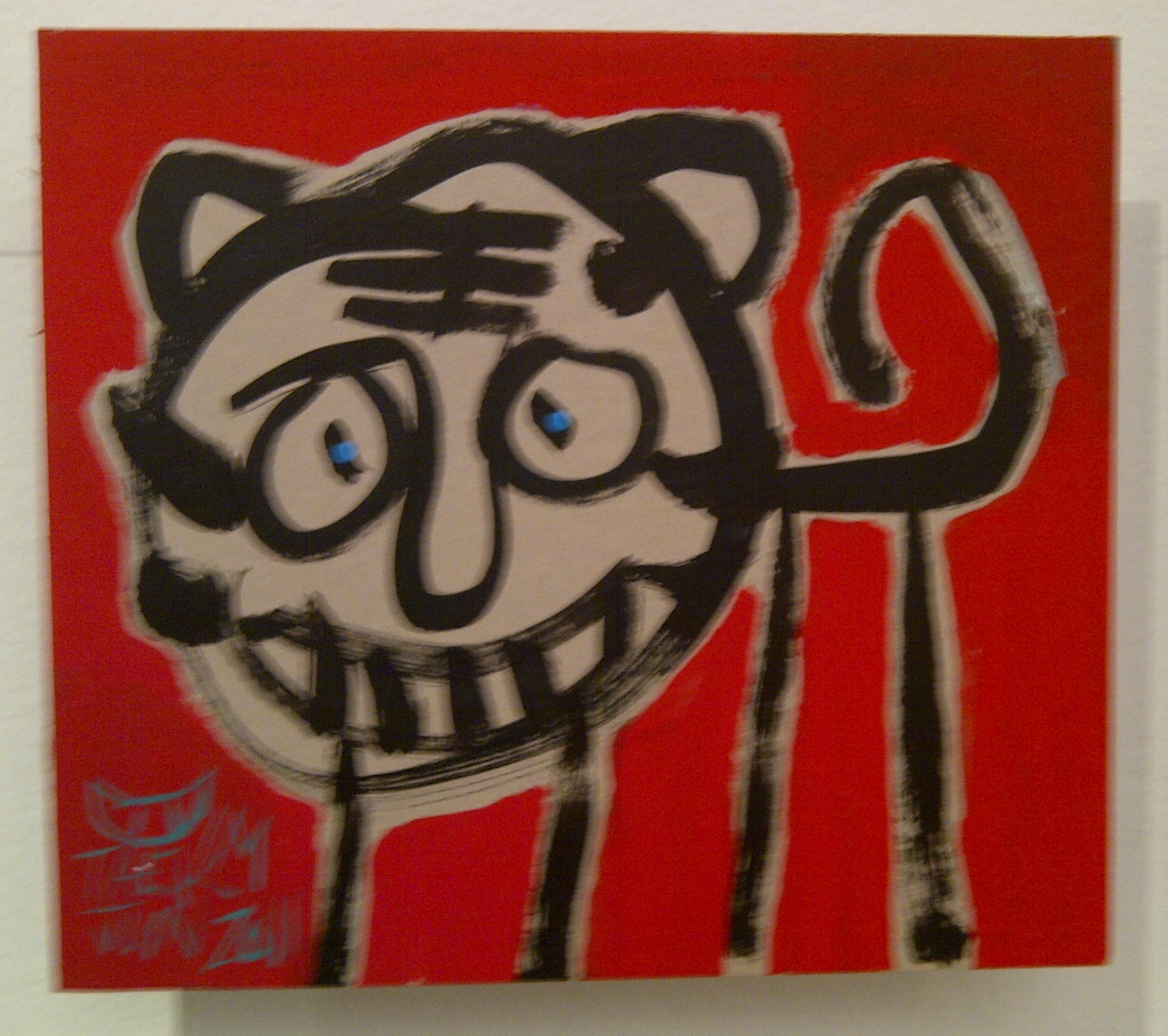
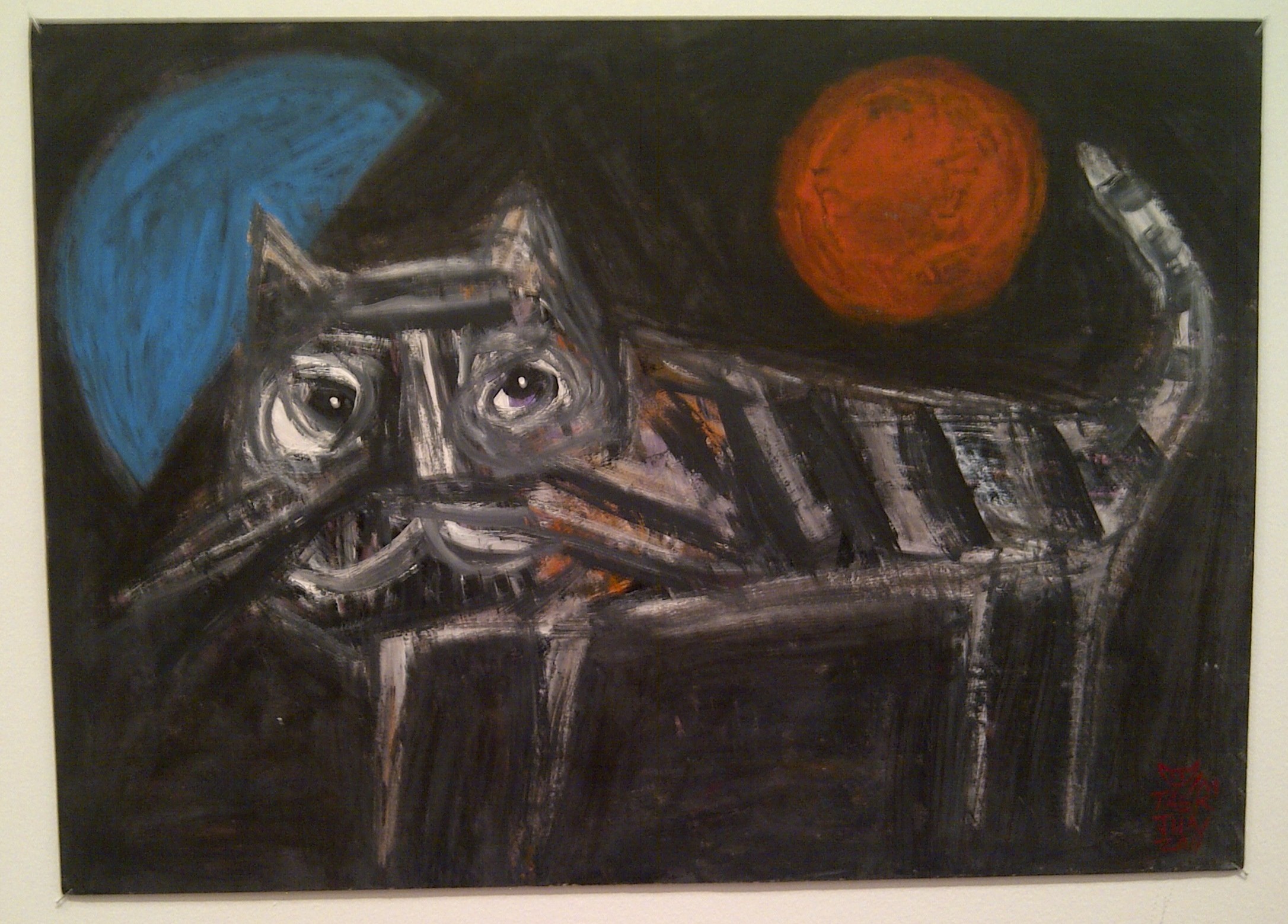

Comments:
Brad:
I learn more and more how close our values and morals are. thank you WBrad
Linda:
@Brad Hi Brad! Where are you from?
Brad:
Linda, I am from Halton Hills, (Toronto). My parents next door neighbor is from S Korea. Very nice.
Linda:
@Brad Nice to meet you Brad! 🙂